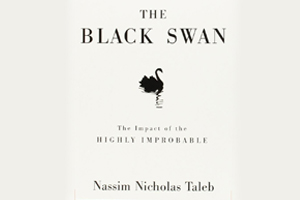Value investing is an investment strategy that appeals to an array of investors, but requires years of practice and behavioural tactics to understand. In his book, ‘Value Investing - Tools and Techniques for Intelligent Investment’, James Montier walks readers through the little known aspects of value investing and provides a good set of insights on those who aspire to become value investors. The book also elaborates on behavioural finance and its importance in investment while pointing out the differences between investment process and the consequent outcome. Written along the lines of his popular weekly column, Montier’s book is an important treatise for anyone interested in the financial segment and keen on securing and growing their capital.
Key takeaways
- Of all investment strategies, value investing is the only tried and tested method capable of offering you sustainable and long-term returns.
- In today’s evolving world, value investing requires you to think in a different fashion and use the latest and cutting-edge tools and techniques to make the most of your investment, while also applying tried and tested methods.
- Through behavioural finance, you can find ways to override the emotional distractions which are capable of creating fault-lines in the value approach.
- Thinking and acting differently from the herd is important to building and sustaining long-term wealth.
- When considering risk in investment, there are three major types – valuation risk, balance sheet or financial risk and earnings or business risk.
- Studying behavioural finance will help you realise that stumbling blocks such as herding, excessive confidence, loss aversion, and availability bias could hinder your value investment process.
- Good decision making does not require humongous amounts of data. It depends on aptly applying value investment principles and acting on good information.
Value investing is a field that you must have definitely heard about from various sources. You may even have applied it in your investment journeys. However, were you able to actually harness the power of value investing? Probably or probably not. One of the major factors to consider in value investing is behavioural finance and, within this aspect, a chief component is risk.
Assessing risk in value investing
When considering risk, you must realize that it is possibly the most important and a highly misunderstood concept in finance and investing. What most investors do is simply break up risk into a number of statistical figures. However, risk is much more than that. It is a concept and a notion that needs to be thoroughly assessed and controlled. When it comes to value investment, risk is not created by market volatility. Instead, in value investing, risk refers to the possibility of a permanent loss of capital. In investing, the trinity of risk includes the following aspects:
- Risk of valuation: As an investor, if you purchase an investment at a price which is unfairly high, you stand the risk of diminished margin of safety. Such a purchase puts in your possession an investment which is extremely dependent on good news and strong analytical value. In such a scenario, even the smallest of setbacks could cause the investment to fall in value, especially since it is overpriced at the time of purchase. To avoid valuation risk, investors must take efforts to calculate the underlying value of the investment and only invest in it when the investment is available at a discount in comparison to the estimated value. This will keep you in a good position even when the markets witness a downfall as your investment will maintain its intrinsic value and fair price.
- Risk of business or earnings risk: When you consider purchasing an investment, you need to analyse the possibility of the quality of the investment falling in the near future. If it is a company’s stocks, look at its earning and business potential, over the longer-term, before deciding to buy. It is true that no business or company is risk-free. However, you must ascertain whether the potential changes in business quality or earnings are temporary or permanent. If you are planning to buy the stock of a company which is going through a temporary bad patch, then you are looking at an opportunity. However, if you fail to realise that the negative movements or loss of earnings could be permanent, you would be entering into a value trap which could put your investment at risk.
- Risk in financials or balance sheet risk: Before buying the shares of a company, you must take a look at the company’s balance sheet and other financial information to ensure that your capital is being put to good use. You can consider the Price to Book Value (P/BV) ratio, which is calculated as the market price per share divided by the book value per share. It is often used to assess the price of a company in relation to its book value and can help ascertain whether or not to invest. While a P/BV ratio of 1 is considered safe, you can also pay a premium to build positions in value stocks. Remember, the higher the ratio, the more expensive the stock is, in comparison to its book value. Look at balance sheets to ensure that you are not missing out on any financial weaknesses which the company may be hiding from potential investors.
Risk is inherent in the stock market and you can never avoid it completely. However, you can evaluate risk by looking at the above-mentioned aspects and invest in a company which is most in line with your risk profile and appetite.
Behavioural blocks impacting value investing
As you know, money is an aspect which makes most people emotional. It is difficult to act with logic and reason when faced with the potential loss of wealth and this is where the behavioural blocks to value investing make their presence felt. Major blocks impacting the process include availability bias, loss aversion, excessive confidence, and herding. Loss aversion is easy to understand and refers to your fear of losing hard-earned wealth. This inherent behavioural trait could force you to sell off your shares at the worst times, making you fall prey to unnecessary losses. On the contrary, if you don’t witness loss aversion, then you might end up holding on to your investments for the long-term and potentially creating great wealth. It is, therefore, a vicious cycle which affects the savviest of investors. In addition, loss aversion could also stop you from investing in an attractive market and earning strong returns.
Next up is herding, wherein you follow the crowd mentality and avoid making decisions on your own. It makes sense that if you follow the crowd, your results will also be only in line with the returns accumulated by the crowd. Suppose you sell a good stock to put your funds in a stock which is trending, but the trend only lasts for a little while. You would end up losing money on the purchase while also losing out on the profits being made by the value stock you sold off. In John Templeton’s insightful words, “To buy when others are despondently selling and sell when others are greedily buying requires the greatest fortitude and pays the greatest reward.”
The third block to value investing is excessive confidence which is as dangerous as loss aversion. Value investing is a field which requires temperance and self-control. Do not take risky decisions just because you have money for, as they say, a fool and his money are soon parted. Also, do not buy stocks just because they are available. First ascertain why they are available and how they can enhance your portfolio and only then invest to follow the value investing style.
Simplify the process
As an investor, you may believe, faultily, that value investment needs complex strategies and thought processes but, as with everything else in life, it is best to keep it as simple as possible. Many times, you might have failed to act on your ideas. You might spend a tremendous amount of time in planning and considering the potentials of the stock but eventually may fail to act. Overcomplicating the investment process puts you at risk of failing to strike the iron when it’s hot, which means take advantage of opportunities that come your way. We always spend time amassing information, without questioning how much we actually need to know. This common fallacy can put any value investor at risk of not investing when the time is right. As an investor, you must always keep an eye on what is important and not fall prey to massive loads of information which may end up unnecessarily confusing you.
Finally, it is important to remember that value investment is not for the short-term investor. The tactic is only effective if you are in it for the long-term. It is only in the longer term that the underlying strategies come into effect. And, it is also imperative to remember that investment, as a whole, should be boring. The more boring it is, the less stressful and worrisome will be your returns. As said by investing greats, investment is effective when it is as boring and uneventful as watching paint dry or grass grow. The less you stress, the more your money will grow when you subscribe to the value investing strategy followed and popularized by investing giants.
As mentioned in the book, investing should be easy and not a source of stress. However, we all know that managing emotions, especially when the equity market is moving up and down, can be very challenging. At such times, it really does not matter whether you are a long-term investor or a trader. Greed and fear will definitely get the better of you. In such a scenario, what can you do? You can choose to invest in mutual funds via the Systematic Investment Plan (SIP) route. This approach will cover many of the tenets mentioned in this book. Firstly, mutual funds are investment vehicles that invest across equity, debt, and other instruments or according to certain strategies and styles. So, if you want to reap the long-term benefits of equity investing by following the value investing style, you have the option of investing in an equity mutual fund that follows the value investing approach. Secondly, when you start an SIP, you invest a fixed amount of money in a mutual fund scheme of your choice and at time intervals that suit you best. You can decide to invest as low as Rs. 500 in an equity mutual fund on a fortnightly, monthly, or quarterly basis. Now, let's understand how this will help you overcome your emotional biases.
You have made a commitment to invest a fixed amount of money. As long as you continue with your SIP, market ups and downs will not impact your investment journey. On the contrary, when you invest consistently through market cycles, you will be able to take advantage of the lower prices during market falls and reduce the average cost of your investment over a period of time. Thus, there is no need to time the market and worry about sharp market movements in the short-term. Over the long-term, you can benefit from both the gains generated from value investing and compounding. A win-win situation for any investor.
An investor education initiative by Edelweiss Mutual Fund
All Mutual Fund Investors have to go through a onetime KYC process. Investor should deal only with Registered Mutual Fund (RMF). For more info on KYC, RMF and procedure to lodge/redress any complaints, visit - https://www.edelweissmf.com/kyc-norms
MUTUAL FUND INVESTMENTS ARE SUBJECT TO MARKET RISKS, READ ALL SCHEME RELATED DOCUMENTS CAREFULLY
Trending Books
MUTUAL FUND INVESTMENTS ARE SUBJECT TO MARKET RISKS, READ ALL SCHEME RELATED DOCUMENTS CAREFULLY.













